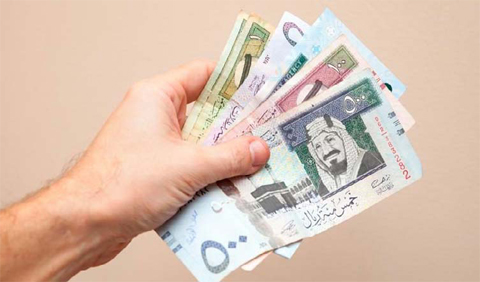Lower rates could ease stress on companies, economy
 RIYADH: The three-month Saudi interbank offered rate fell to 2.34 percent from Sunday’s 2.36 percent yesterday, bringing its drop over the past two days to 4.2 basis points - the biggest two-day fall since rates began rising in August 2015.
RIYADH: The three-month Saudi interbank offered rate fell to 2.34 percent from Sunday’s 2.36 percent yesterday, bringing its drop over the past two days to 4.2 basis points - the biggest two-day fall since rates began rising in August 2015.DUBAI: Saudi Arabian money market rates dropped for a second straight day yesterday after authorities acted to ease a liquidity crunch in the banking sector caused by low oil prices. The three-month Saudi interbank offered rate fell to 2.34 percent from Sunday's 2.36 percent, bringing its drop over the past two days to 4.2 basis points - the biggest two-day fall since rates began rising in August 2015.
Three-month SAIBOR had climbed to 2.386 percent last week, its highest since January 2009, from below 1.0 percent a year ago, propelled by monthly government issues of domestic bonds to cover a huge budget deficit caused by shrunken oil revenues. High rates threaten to squeeze companies' finances and hurt the economy, which has already been slowing because of government spending cuts.
In the last couple of weeks, authorities have taken their strongest action yet to reduce upward pressure on rates. The government raised a mammoth $17.5 billion in its first international bond issue, giving it financial space to suspend October's offer of domestic bonds.
Last week the central bank introduced a new 90-day repurchase agreement to inject funds into the market when needed, and it committed to lowering its Treasury bill issues to a maximum 3 billion riyals ($800 million) per week from 9 billion riyals.
After the international bond issue, bankers predicted the government would deposit at least part of the proceeds in local banks, which could further ease liquidity. It was not immediately clear whether this process had already begun. Bankers said the extent to which money rates continued to fall would depend on how soon the government returned to the domestic bond market to borrow.
LIQUIDITY
The international bond sale should allow the Saudi government to reduce its domestic bond sales for the next two or three months, Jean-Michel Saliba, regional economist at Bank of America Merrill Lynch, said in a report.
"As long as external bond issuance acts as a substitute to domestic bond issuance, it should help to gradually ease domestic liquidity and have a positive knock-on effect on Saudi rates," he said.
Some Saudi bankers, however, said they thought that monthly offers of 20 billion riyals in domestic bonds could resume as soon as next month, which would limit any further fall in rates.
In the long term, pressure on rates will depend largely on two factors: the government's progress in cutting its budget deficit, which totalled $98 billion last year, and the proportion of the deficit which the government covers with additional international bond sales instead of domestic debt issues, the bankers said. Longer-term Saudi money rates also fell back yesterday, suggesting the market believed the improvement in liquidity would not merely be short-term. One-year SAIBOR dropped to 2.627 percent from 2.641 percent.
Expectations that the liquidity crunch would ease, benefiting companies and therefore banks' loan quality, have helped to boost banks' share prices sharply in the past two weeks. The sector's index was up a further 0.4 percent yesterday afternoon. But there were some signs that the decline in rates might already be about to slow. Although many individual Saudi banks quoted lower SAIBOR rates yesterday, the biggest lender, National Commercial Bank, did not, keeping its three-month quote at 2.15 percent. - Reuters










